Address
304 North Cardinal
St. Dorchester Center, MA 02124
Work Hours
Monday to Friday: 7AM - 7PM
Weekend: 10AM - 5PM
Address
304 North Cardinal
St. Dorchester Center, MA 02124
Work Hours
Monday to Friday: 7AM - 7PM
Weekend: 10AM - 5PM
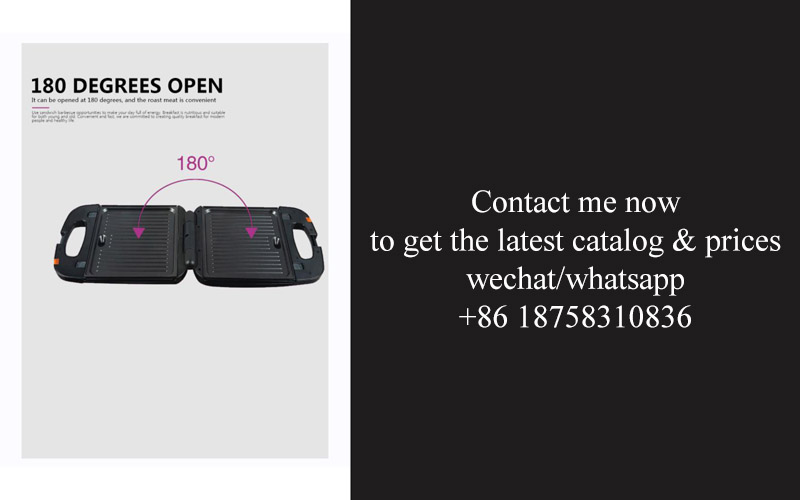
Grill manufacturing has undergone a remarkable transformation with the advent of in-house mold making. This shift has not only revolutionized the design and production processes but has also opened new avenues for innovation and efficiency. As the industry continues to evolve, it’s important to delve into the nuances of this approach, understanding its role, benefits, challenges, and the promising future it holds. Let’s explore the impact of custom molds on the grill manufacturing landscape.
In recent years, the grill industry has seen a significant shift towards in-house mold making. This trend is not just a mere change in manufacturing processes but a strategic move that’s reshaping how grills are designed, produced, and consumed. As consumers demand more personalized and innovative products, in-house mold making has become a pivotal factor in the grill industry’s growth.
The demand for customizability in grills has soared, with customers now expecting more than just a standard product. In-house mold making allows manufacturers to cater to these diverse needs more efficiently. By controlling the mold-making process internally, companies can produce unique designs and shapes that stand out in the competitive market.
With the rise of e-commerce and direct-to-consumer sales models, the importance of rapid prototyping and customization has become even more pronounced. In-house mold making facilitates faster turnaround times, ensuring that manufacturers can keep up with the dynamic market demands without compromising on quality.
Moreover, the integration of advanced materials and technologies into grill designs has opened up new possibilities. Molds made in-house can be tailored to accommodate complex designs, intricate details, and even advanced materials like high-grade stainless steel or lightweight composites. This has led to the creation of grills that not only look sleek and modern but also offer superior performance and durability.
The cost-effectiveness of in-house mold making cannot be overlooked. Traditionally, manufacturers would outsource mold making to external vendors, which often came with high costs and longer lead times. By bringing this process in-house, companies can reduce these costs significantly. It also enables them to manage inventory more effectively, as they can produce molds as needed, rather than in bulk.
Another key advantage of in-house mold making is the increased control over quality. When molds are produced in-house, quality assurance can be strictly maintained throughout the manufacturing process. This ensures that each grill produced is consistent with the highest standards, leading to greater customer satisfaction.
The environmental impact of manufacturing processes has also become a significant concern. In-house mold making allows for better control over the production cycle, from raw material sourcing to waste management. This often results in a more sustainable approach, reducing the carbon footprint and waste associated with the manufacturing process.
In the realm of innovation, in-house mold making has paved the way for the development of new grill features. For instance, molds can be designed to incorporate advanced cooling systems, ergonomic handles, or even smart technology integrations. These innovations not only enhance the user experience but also position the grill manufacturer as an industry leader.
As the grill industry evolves, so too do the challenges. The complexity of in-house mold making requires skilled technicians and advanced machinery. Companies must invest in training their staff and upgrading their equipment to keep up with the latest mold-making technologies.
The global supply chain disruptions over the past few years have also highlighted the vulnerabilities of relying on external mold makers. In-house mold making reduces dependency on international suppliers, ensuring a more stable and predictable production process.
Looking ahead, the future of grill manufacturing with in-house mold making looks promising. As the industry continues to grow and consumer expectations rise, the ability to produce customized, high-quality grills quickly and cost-effectively will be a key competitive advantage. The grill industry is undoubtedly at the forefront of this trend, with the potential to drive innovation and efficiency in manufacturing across other sectors as well.

In the fast-paced world of the grill industry, the role of in-house mold making has become increasingly significant. It’s not just about creating molds; it’s about driving innovation, reducing costs, and ensuring a seamless production process. Let’s delve into the multifaceted role that in-house mold making plays in the grill industry.
Mold making is the foundation upon which the entire manufacturing process of grills is built. These molds are the precise templates that guide the shaping of various components, from the metal frames to the non-stick cooking surfaces. By having in-house capabilities, manufacturers can tailor the molds to their exact specifications, ensuring a perfect fit and function for each part of the grill.
Customization is a key aspect of in-house mold making. Unlike off-the-shelf options, manufacturers can design molds that cater to the unique features and design elements they wish to incorporate into their grills. This level of customization allows for the creation of innovative features that can set a brand apart in a crowded market, from ergonomic handles to advanced temperature control systems.
The speed of production is another critical factor influenced by in-house mold making. When molds are made on-site, it eliminates the need for external suppliers, cutting down on lead times. This agility is particularly valuable for companies that operate in a highly competitive industry where being able to quickly respond to market trends and consumer demands is crucial.
Quality control is significantly enhanced with in-house mold making. By having direct oversight of the mold-making process, manufacturers can ensure that the molds are up to the highest standards. This not only guarantees the longevity and performance of the grills but also minimizes the risk of manufacturing defects that could otherwise lead to recalls or customer dissatisfaction.
Cost savings are a compelling reason for companies to invest in in-house mold making. While initially the investment in equipment and skilled labor can be substantial, over time, it pays dividends. By reducing the dependency on external suppliers, manufacturers can negotiate better terms, avoid unexpected price hikes, and even save on transportation costs.
The precision of in-house molds is unparalleled. Every detail of the grill, from the smallest rivet to the intricate patterns on the grill surface, can be meticulously crafted. This level of detail not only improves the aesthetics of the grill but also enhances its user experience. A well-crafted mold can lead to components that are not only durable but also easy to assemble and maintain.
Innovation is fostered within the walls where in-house mold making takes place. It’s a collaborative environment where designers, engineers, and technicians can brainstorm and experiment with new materials and designs. This cross-functional approach often leads to breakthroughs that can revolutionize the grill industry, such as incorporating biodegradable materials or integrating smart technology.
The strategic importance of in-house mold making cannot be overstated. It’s not just about having the right tools; it’s about having the right mindset. Companies that embrace in-house mold making are often more adaptable to changes in technology, market demands, and consumer preferences. This adaptability is what allows them to stay ahead of the curve.
The environmental impact of manufacturing processes is also a consideration that in-house mold making addresses. By having control over the materials and methods used in mold making, manufacturers can choose environmentally friendly options. This can range from using recycled materials to reducing the energy consumption in the mold-making process.
Lastly, the role of in-house mold making in brand reputation is undeniable. A grill with a unique design and exceptional build quality is more likely to be perceived as a premium product. This perception can translate into higher sales and customer loyalty, which are vital for long-term success in any industry.
In conclusion, the role of in-house mold making in the grill industry is multifaceted, impacting everything from design and production to quality, cost, and sustainability. As the industry continues to evolve, the importance of in-house mold making will only grow, providing manufacturers with a competitive edge and the ability to deliver cutting-edge products to consumers.
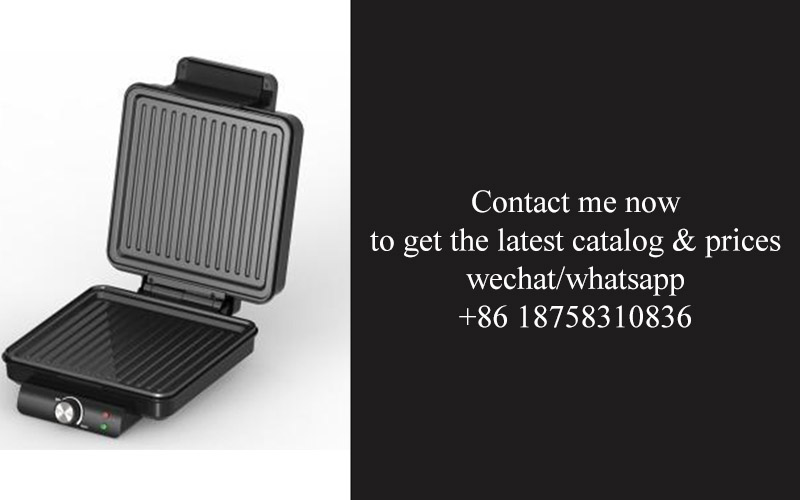
In the realm of grill design, the advent of custom molds has revolutionized the way manufacturers approach innovation. These molds are not just tools for mass production; they are the key to crafting unique and high-quality grills that stand out in a crowded market. Here’s a closer look at how custom molds are fueling innovation in grill design:
Custom molds allow for intricate and detailed designs that can’t be achieved with standard molds. Manufacturers can now create grills with complex patterns, unique handles, and innovative features that add a touch of elegance and functionality to the cooking experience. From sleek, minimalist lines to bold, ornate designs, the possibilities are virtually limitless.
The ability to create custom molds also means that grill manufacturers can cater to specific market demands. Whether it’s a trend towards eco-friendly materials or a rise in interest for smart kitchen appliances, custom molds can be used to integrate these elements seamlessly into the design. For instance, a mold can be designed to incorporate smart technology features like Bluetooth connectivity or temperature sensors, turning a grill into a high-tech cooking companion.
The customization of grill designs through custom molds also opens up new opportunities for personalization. Consumers today are looking for products that reflect their personal style, and custom molds can enable manufacturers to offer a range of grill models with various finish options, from brushed stainless steel to a variety of colors. This not only allows for a more diverse product line but also encourages brand loyalty as customers feel a deeper connection to their chosen grill.
One of the most significant innovations facilitated by custom molds is the integration of new materials. Molds can be designed to accommodate advanced materials like composites, which offer superior durability and heat resistance compared to traditional metals. This has led to the creation of grills that are not only stylish but also robust and long-lasting, appealing to both casual grillers and professional chefs.
Grill design has also benefited from the ability to create molds for intricate grill grates. These grates are not just for aesthetic purposes; they are essential for even cooking and preventing food from sticking. Custom molds can produce grates with unique designs, such as raised bars for better heat distribution or special surfaces that promote fat draining, which can greatly enhance the grilling experience.
The use of custom molds also allows for the integration of safety features into grill design. Molds can be crafted to include ergonomic handles, heat-resistant materials, and even safety locks, all of which contribute to a safer cooking environment. These features are not only important for compliance with safety standards but also for providing customers with peace of mind.
In the world of grilling, innovation isn’t just about creating new products; it’s about enhancing the user experience. Custom molds enable grill manufacturers to push the boundaries of what’s possible in design, making grills not just cooking tools but also works of art. The ability to mold materials into virtually any shape or size has led to the creation of grills that are not only functional but also a statement piece in any kitchen.
The future of grill design looks to be even more exciting as manufacturers continue to explore the potential of custom molds. We can expect to see even more innovative features, materials, and personalization options. The grill, once a simple outdoor cooking appliance, is now poised to become a versatile and sophisticated cooking companion, all thanks to the power of custom molds.

In-house mold making has become a cornerstone for manufacturers in the grill industry, offering a myriad of benefits that enhance both product quality and operational efficiency. Here’s a closer look at some of the key advantages:
Manufacturers gain a competitive edge by controlling the mold-making process. This internal control allows for the rapid prototyping and refinement of grill designs, ensuring that products meet the latest market trends and consumer demands. The ability to iterate quickly with custom molds can lead to the development of innovative features that set a brand apart.
Cost savings are a significant benefit of in-house mold making. By eliminating the need for outsourcing to external mold-making facilities, manufacturers can reduce production costs. This reduction in overhead allows for more competitive pricing of grills, making them more accessible to a broader consumer base.
Custom molds enable manufacturers to create grill components with precise dimensions and intricate designs. This level of customization isn’t always possible when relying on standard molds from suppliers. The result is a grill that not only looks unique but also functions more efficiently, with components that fit seamlessly together.
Quality control is streamlined with in-house mold making. Manufacturers can closely monitor the mold-making process and make adjustments on the spot if any issues arise. This immediate oversight minimizes the risk of producing defective parts, leading to higher overall product quality and customer satisfaction.
The flexibility of in-house mold making is unparalleled. Manufacturers can adapt their grill designs to changing market conditions without the constraints of a standardized mold. This agility is crucial in a fast-paced industry where consumer preferences can shift rapidly.
In-house mold making can also lead to improved sustainability practices. By reducing the number of suppliers and transportation requirements, manufacturers can lower their carbon footprint. Additionally, the ability to recycle and reuse molds for different models reduces waste.
The integration of in-house mold making into the production process can enhance the overall efficiency of the manufacturing line. With custom molds, manufacturers can optimize the production flow, reducing downtime and increasing output.
Custom molds can also contribute to the development of more durable grill components. The precise engineering that goes into the mold-making process ensures that the parts are robust and can withstand the rigors of outdoor use.
Innovation is fostered when manufacturers have control over their mold-making capabilities. This control encourages the exploration of new materials and manufacturing techniques, which can lead to groundbreaking grill designs that are both functional and aesthetically pleasing.
The time-to-market for new grill models can be significantly reduced with in-house mold making. The ability to quickly produce prototypes and iterate designs means that manufacturers can bring new products to market faster, capitalizing on market opportunities before competitors.
In-house mold making can also improve communication and collaboration within the manufacturing team. Having the mold-making process under one roof means that engineers, designers, and production staff can work more closely together, leading to a more cohesive and efficient product development process.
Lastly, the financial investment in in-house mold making can pay off in the long run. While the initial cost may be higher than outsourcing, the long-term savings, increased quality, and competitive advantage can make the investment worthwhile for grill manufacturers.
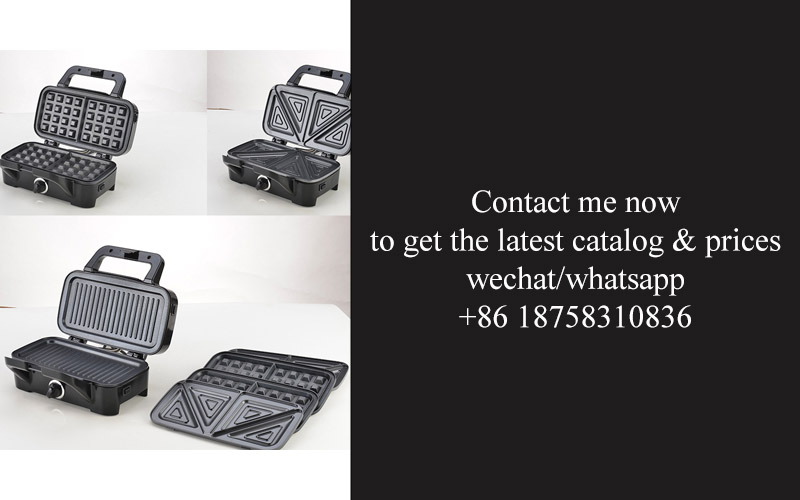
The grill industry has been witnessing a significant shift towards in-house mold making. This trend is reshaping the landscape of how manufacturers approach product design and production. As the demand for unique and high-quality grills continues to rise, companies are leveraging custom molds to drive innovation and maintain a competitive edge.
Custom molds allow for the creation of grill designs that are not just functional but also aesthetically pleasing. By having control over the mold-making process, manufacturers can experiment with shapes, sizes, and features that cater to specific market segments. This level of customization isn’t just about looks; it’s about enhancing the user experience.
Grills with custom molds often feature intricate designs that are not possible with standard molds. From unique handle designs to innovative cooking surface patterns, these details can significantly differentiate a product in a crowded market. The ability to create complex designs without compromising on quality is a game-changer for manufacturers looking to stand out.
The benefits of in-house mold making are not limited to aesthetics. They also extend to the efficiency of the production process. By eliminating the need for external mold suppliers, manufacturers can reduce lead times and minimize the risk of delays due to supply chain issues. This internal control over the mold-making process ensures that production schedules are met, which is crucial for staying ahead of market demands.
Quality assurance is another key advantage. When molds are made in-house, manufacturers have direct oversight over the mold-making process. This means they can ensure that the molds are precisely crafted to their specifications, leading to consistent and high-quality grill products. The elimination of potential defects that might arise from outsourcing mold making is a significant boost to the overall product integrity.
Cost savings are also a significant factor. While setting up an in-house mold-making facility may require an initial investment, over time, it can lead to substantial cost reductions. By cutting out the middleman and having direct control over the mold production, manufacturers can reduce the costs associated with mold rentals, maintenance, and shipping. This cost-effectiveness is particularly beneficial for companies that operate on tight profit margins.
The flexibility of in-house mold making is unparalleled. Manufacturers can quickly adapt to changes in market trends or consumer preferences without the constraints imposed by external mold suppliers. This agility allows them to bring new products to market faster, capitalizing on opportunities as they arise. The ability to respond rapidly to customer feedback is invaluable in a highly competitive industry like grilling.
Custom molds also open up possibilities for innovation in materials. By having the ability to create complex molds, manufacturers can explore new materials or combinations of materials that could enhance the durability, heat retention, or ease of maintenance of grills. This exploration can lead to breakthrough products that not only meet but exceed customer expectations.
Moreover, in-house mold making can foster a culture of innovation within the manufacturing team. When employees are involved in the mold-making process, they gain a deeper understanding of the product’s design and function. This understanding can spark new ideas and solutions, leading to a continuous stream of improvements and new features that can set a brand apart.
In conclusion, the role of in-house mold making in the grill industry is multifaceted. It drives innovation in design, enhances production efficiency, ensures quality control, offers cost savings, provides flexibility, and promotes a culture of innovation. As the market for grills continues to evolve, the advantages of in-house mold making will likely become even more pronounced, making it an indispensable tool for manufacturers aiming to lead the market.

In the realm of grill manufacturing, the adoption of in-house mold making has become a game-changer for many companies. Let’s delve into some case studies that showcase the successful implementations of this practice.
Case Study 1: The Customized BBQ Grill ManufacturerA small, family-owned BBQ grill manufacturer found itself at a crossroads. They were struggling to keep up with the competition, which was offering a wider variety of grill designs. The solution? Investing in in-house mold making. By creating custom molds, they were able to produce unique and intricate grill designs that set them apart in the market. This customization not only enhanced their product offerings but also allowed them to cater to specific customer preferences, leading to increased sales and customer loyalty.
Case Study 2: The Eco-Friendly Grill InnovatorAn innovative grill manufacturer was passionate about sustainability and eco-friendliness. They wanted to produce grills that were not only durable but also environmentally conscious. By establishing an in-house mold-making capability, they were able to design grills with innovative features, such as recyclable materials and energy-efficient components. This commitment to sustainability resonated with eco-conscious consumers, resulting in a significant market share gain and positive brand image.
Case Study 3: The High-End Grill BrandA high-end grill brand sought to elevate its product line with premium features and exquisite designs. The key to achieving this was through the creation of custom molds. By investing in in-house mold making, they were able to produce grills with intricate patterns, advanced materials, and cutting-edge technologies. The result was a premium product that commanded a higher price point, leading to increased profitability and a reputation for luxury grilling experiences.
Case Study 4: The Compact Grill SpecialistA company specializing in compact grills faced the challenge of fitting all the necessary features into a small, portable design. By developing in-house mold-making capabilities, they were able to create molds that allowed for precise and efficient production of their compact grills. This not only ensured consistency in quality but also reduced production time and costs. The compact grill line became a hit among consumers seeking a convenient and portable grilling solution.
Case Study 5: The Customization EnthusiastA grill manufacturer recognized the growing trend of personalization in consumer goods. They decided to leverage in-house mold making to offer customers the opportunity to customize their grills. By providing a range of design options and materials, customers could create a grill that truly reflected their personal style. This customization service became a unique selling point, attracting a niche market of consumers who value individuality and uniqueness in their products.
Case Study 6: The Market Leader’s Competitive EdgeA market leader in the grill industry faced intense competition from new entrants. To maintain their competitive edge, they invested in in-house mold making. This allowed them to quickly adapt to market trends and consumer demands, producing grills with the latest features and designs. By being able to respond swiftly to changes in the market, they were able to retain their position as the go-to brand for grill enthusiasts.
These case studies highlight the diverse ways in which in-house mold making has been successfully implemented across the grill industry. From customization and sustainability to premium features and market responsiveness, the benefits of this practice are clear. By investing in in-house mold-making capabilities, companies can not only differentiate themselves in the market but also meet the evolving needs and preferences of their customers.
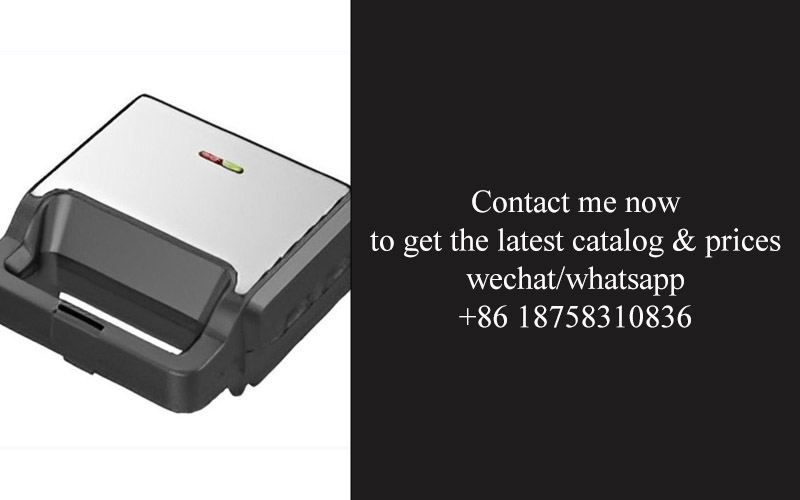
In the realm of in-house mold production, challenges are inevitable. However, with the right strategies and solutions, manufacturers can navigate these hurdles with ease. Here’s a closer look at the common challenges faced and the innovative ways to overcome them.
Manufacturers often grapple with the complexity of mold design. Custom molds require precise engineering and a deep understanding of the material properties. Mistakes in design can lead to costly rework or even the scrapping of the entire mold. To tackle this, companies are investing in advanced CAD (Computer-Aided Design) software that allows for detailed simulations and real-time feedback, reducing the likelihood of design flaws.
Quality control is another significant challenge. Ensuring that every part produced by the mold meets the exact specifications can be daunting. Manufacturers are turning to automated quality inspection systems that use AI and machine learning to detect defects early in the production process. This not only improves the final product but also saves time and resources.
The cost of mold making is a major concern. High-quality molds can be expensive to produce, and the longer the production time, the higher the cost. To mitigate this, some companies are exploring alternative materials that offer a balance between cost and performance. Additionally, streamlining the production process through efficient workflow management has helped reduce lead times and costs.
Maintaining consistency in mold production is crucial. Molds can wear down over time, leading to inconsistencies in the parts they produce. To address this, manufacturers are implementing regular maintenance schedules and using high-quality materials that resist wear and tear. Some are even developing molds with self-lubricating features to reduce friction and extend the mold’s lifespan.
The complexity of mold production also brings the challenge of skilled labor shortages. Finding experienced mold makers is difficult, and the cost of training new talent can be substantial. To combat this, companies are investing in training programs that develop a skilled workforce internally. By fostering a culture of continuous learning, manufacturers are creating a pool of knowledgeable professionals who can handle the intricacies of mold making.
Environmental concerns are also a growing challenge. Traditional mold making processes can be environmentally unfriendly, with the use of harmful chemicals and high energy consumption. To tackle this, manufacturers are adopting greener practices, such as using biodegradable materials and implementing energy-efficient production techniques. This not only helps in reducing their carbon footprint but also improves their reputation as sustainable businesses.
Another challenge is the rapid pace of technological advancements. Keeping up with new innovations in mold making can be overwhelming. To stay competitive, manufacturers are forming partnerships with research institutions and technology providers. This allows them to access the latest developments and integrate them into their production processes.
Supply chain disruptions can also impact in-house mold production. Being dependent on external suppliers for critical components can lead to delays and increased costs. To mitigate this risk, some companies are diversifying their supplier base and even considering vertical integration by bringing certain parts of the supply chain in-house.
Innovation in mold design is also a challenge. The demand for unique and high-performance parts is ever-increasing. To meet this demand, manufacturers are investing in R&D (Research and Development) to create innovative molds that can produce complex geometries and intricate details. This focus on innovation not only allows them to cater to the current market trends but also positions them as leaders in the industry.
Lastly, the challenge of staying compliant with industry regulations and standards is a constant concern. Ensuring that molds are produced to meet the necessary safety and quality standards can be complex. Manufacturers are turning to certifications and audits to validate their processes and ensure compliance. This not only protects their reputation but also builds trust with customers.
In conclusion, the challenges in in-house mold production are multifaceted, but with the right solutions, manufacturers can turn these challenges into opportunities for growth and innovation. By focusing on design precision, quality control, cost management, sustainability, skilled labor, environmental responsibility, technology integration, supply chain resilience, innovation, and compliance, manufacturers can continue to produce high-quality molds that drive their success in the competitive market.
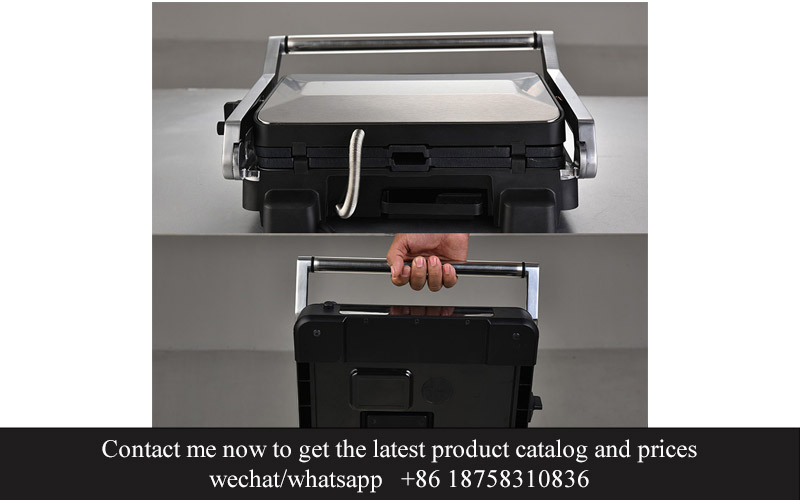
In the realm of grill manufacturing, the adoption of custom molds has become a pivotal factor in shaping the future of the industry. These molds are not just tools for production; they are the architects of innovation, enabling manufacturers to push the boundaries of design and functionality. As we delve into the future, it’s essential to understand the challenges and opportunities that come with this approach.
The precision and flexibility offered by custom molds allow for intricate designs that were once the realm of dreams. These molds can be tailored to specific product requirements, ensuring that each grill not only looks sleek but also performs optimally. For instance, a mold can be designed to create grill grates with unique patterns that enhance heat distribution, or grills with ergonomically designed handles for better user experience.
However, the path to achieving these advancements is not without its hurdles. One of the primary challenges in in-house mold production is the high initial cost. Creating a custom mold is a significant investment, requiring advanced equipment and skilled labor. But this upfront expense is often outweighed by the long-term benefits. Custom molds can lead to reduced production time and costs, as they eliminate the need for multiple setups and can be reused for large volumes.
Another challenge is the complexity involved in the design and maintenance of custom molds. These molds must be meticulously crafted to ensure they can withstand the intense pressure and temperature during the manufacturing process. Regular maintenance and occasional repairs are necessary to keep them in top condition, which requires a dedicated team of experts.
The demand for energy-efficient and sustainable grills is on the rise, and custom molds play a crucial role in this trend. Molds can be designed to incorporate eco-friendly materials and features, such as non-stick coatings made from recycled materials or components that are easier to recycle at the end of the grill’s lifespan.
Case studies from leading grill manufacturers demonstrate the success of in-house molding. One such example is the integration of smart technology in grill designs. By using custom molds, manufacturers have been able to create grill components that house intricate electronic systems, allowing for features like temperature control and Bluetooth connectivity.
Yet, with great potential comes the need for solutions. To address the high initial costs of mold production, some companies are turning to collaborative efforts with mold-making partners. This allows them to share the investment burden while still maintaining control over the design and quality of the molds.
Moreover, advancements in 3D printing technology are revolutionizing the mold-making process. This technology offers the flexibility to create complex molds at a fraction of the cost and time traditionally required. As a result, manufacturers can experiment with new designs and iterate rapidly, bringing innovative products to market faster.
In terms of maintenance, predictive maintenance techniques are becoming more prevalent. By using sensors and data analytics, manufacturers can detect issues with molds before they lead to downtime, thereby minimizing production losses.
Looking ahead, the future of grill manufacturing with custom molds is bright. As consumer preferences evolve, so too will the demands placed on mold designs. We can expect to see an increased focus on customization, allowing consumers to choose from a wider range of features and styles.
The integration of smart home technology is another area that’s poised for growth. Molds can be used to create grills that are compatible with home automation systems, offering seamless integration with other smart appliances.
Moreover, the emphasis on sustainability will continue to shape the industry. Custom molds can help manufacturers produce grills that are not only environmentally friendly but also have a longer lifespan, reducing waste and enhancing the product’s overall appeal.
In conclusion, the challenges in in-house mold production are significant, but so are the opportunities. As the grill industry continues to innovate, the role of custom molds will become even more critical. By navigating the complexities and embracing the solutions at hand, manufacturers can forge a future where grills are not just cooking tools but symbols of innovation and sustainability.